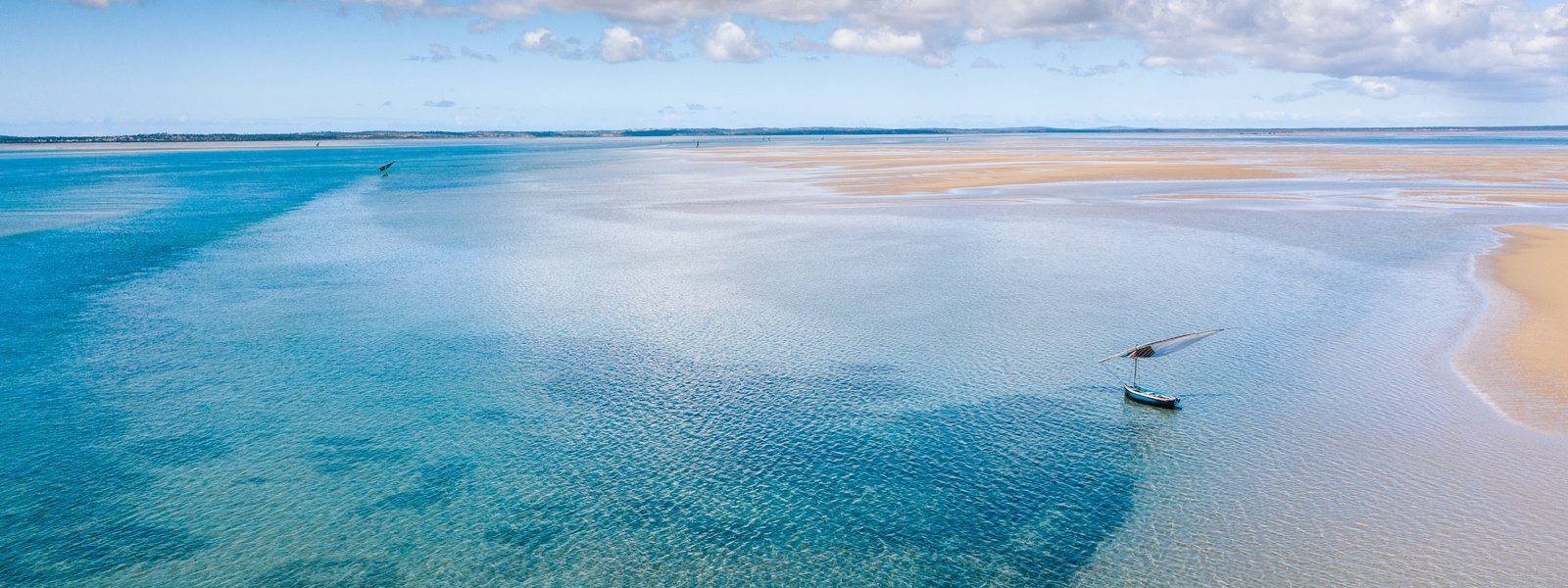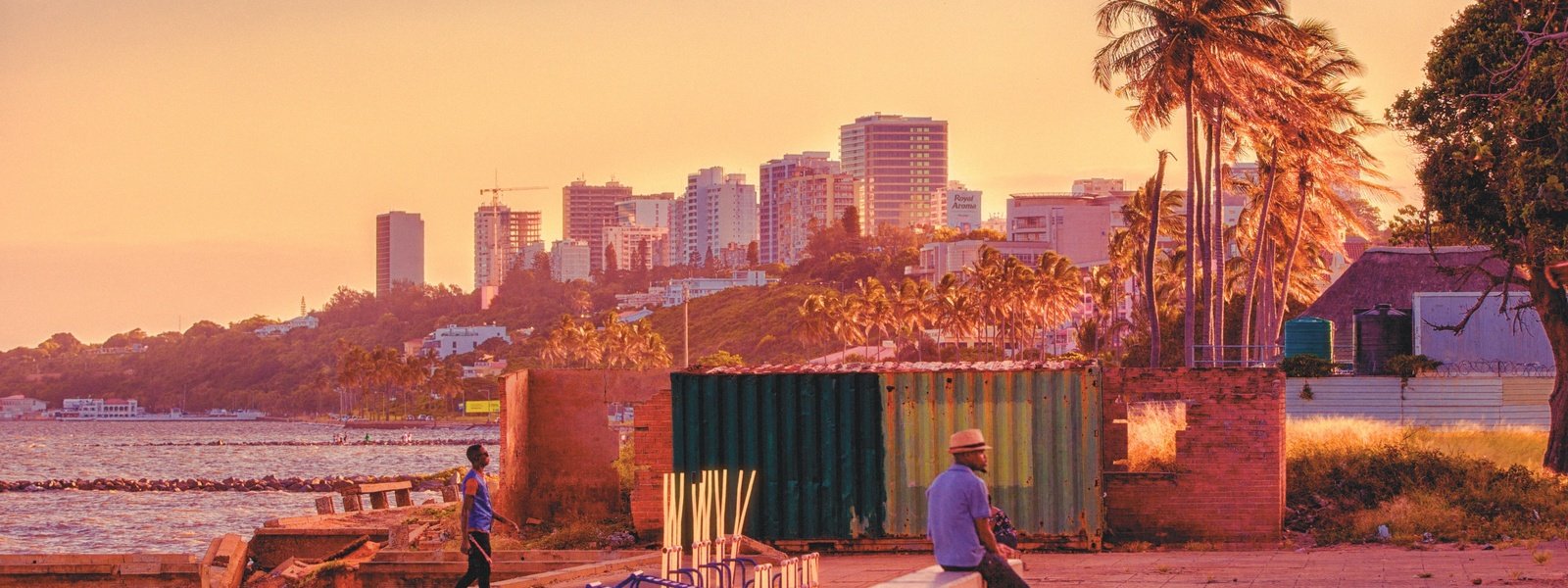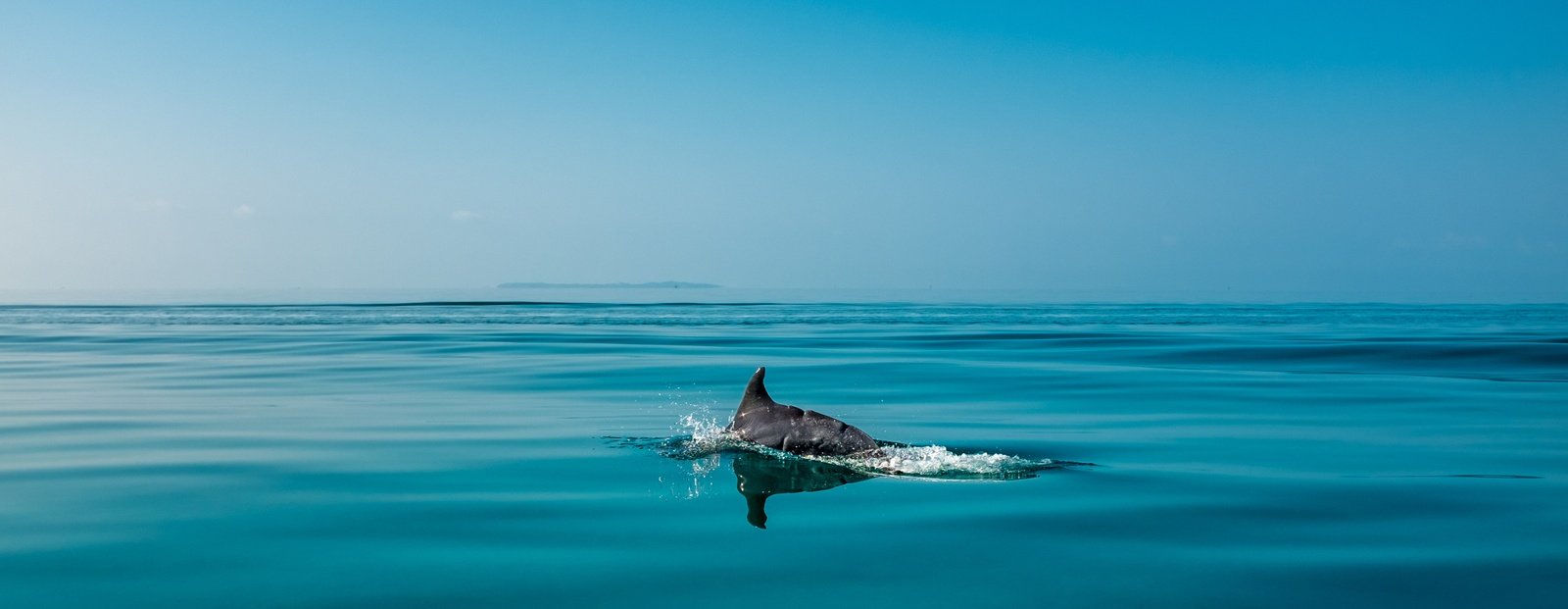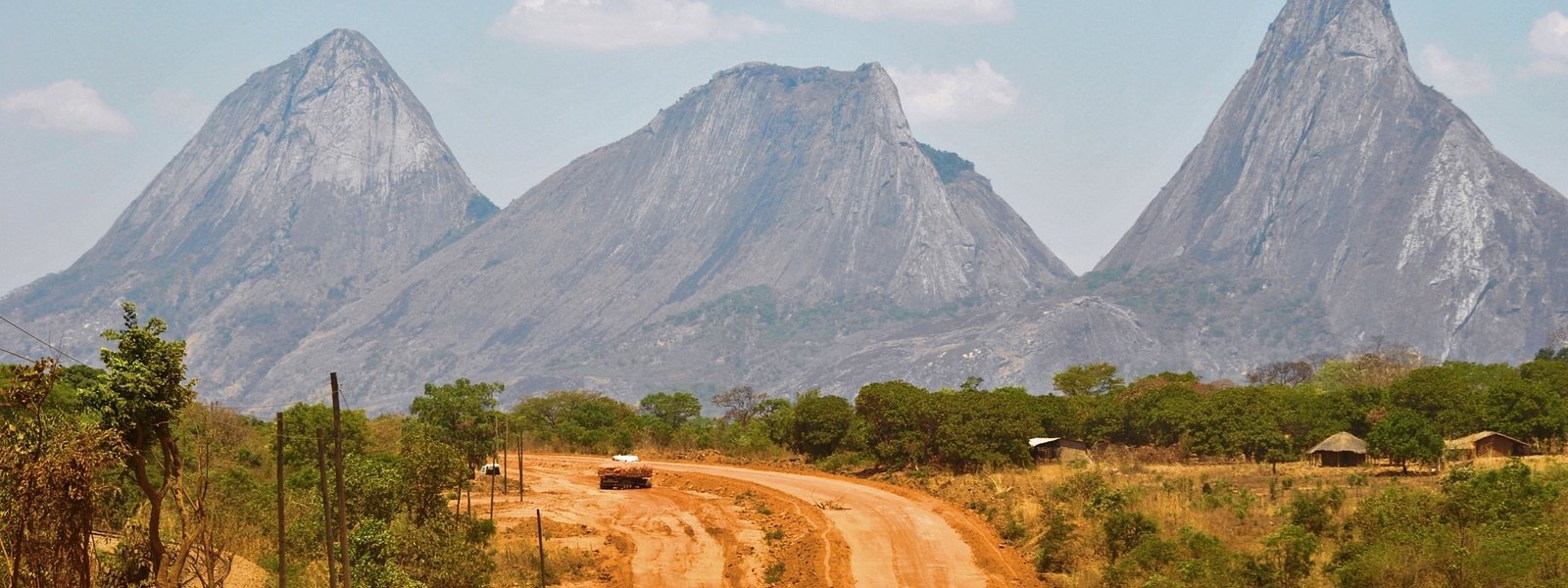



Mozambique
Visit the beautiful Quirimbas Archipelago
Makua women wearing traditional white face masks at Pangane, Photograph: Alberto Loyo/ Shutterstock
The Quirimbas Archipelago consists of 32 islands extending from Pemba until the Tanzanian border incorporating a stretch of almost 400 km of coral reef. Many of the islands are inhabited today by fishermen with Ibo being the most famous serving as the capital. Since the park establishment in 2002, people also engage in tourism aiming to attract visitors to admire the beautiful landscapes, rich biodiversity, excellent beaches and divng options and the rich multicultural history.
View over the Quirimbas, Photograph: Sergio Agostinelli/Flickr
Tourism can contribute to the local economy and conservation of biodiversity, culture and history, but please be cautious, because if it is not done responsibily, mass tourism can have adverse effects by exploiting the local culture and the environment. Always respect the local people, their culture and their traditions, and engage in activities that contribute to their wellbeing and to the conservation of the extraordinary flora and fauna that can be found on the islands!
Sunset at Ibo, Photograph: Rosino/Flickr
How to get there and around?
The Northern parts of Mozambique are often considered as more remote and less touristy because they are difficult to reach, however, two of the most interesting and beautiful places can be found here, the Quirimbas, and Mozambique Island, that can definitely be the highlights of anyone trips to Mozambique. The nearby airport to reach the Quirimbas is at Pemba, however, if you are on a budget or prefer to take it slow, you can also take buses or chapas (minibusses) from other Mozambican cities until Pemba. To reach the Quirimbas it is possible to fly to Ibo Island from Pemba, or take private boats to any of the islands. There are also local boats to some of the bigger island like Ibo, however their schedule is very dependent on the tie so you might have to be patient.
Ibo Island, Photograph: Dimitry B/Unsplash
Pemba
Pemba is a large port city lying on a peninsula in Pemba Bay. It is the capital of Cabo Delgado Province where there are ongoing conflicts, however, Pemba and the Quirimbas are considered safe destinations. Pemba is usually known as the gateway for the Qurimbas islands, however, it is also a popular destination mainly amongst local travelers thanks to its water sport activities including diving in the nearest coral reef, a bustling local market with arts and crafts and traditional silverware section and its great nightlife and dining options.
Colorful boats at Pemba, Photograph: Rosino/Flickr
Quirimbas National Park
The Qurimbas National Park is streching for 100 kms incorporating mainland areas including Pemba, and 11 Southern islands of the Quirimbas, including the 3 main ones: Ibo, Quirimba, and Matemo. A bit less than 120,000 people live inside the national park, mainly on the mainland areas, but also six of the islands (Ibo, Matemo, Quirimba, Quisiva, Quirambo and Quilalea) have long been inhabited mainly by fishing communities.
Young Fishermen at Matemo, Photograph: Stéphane Neckebrock/Flickr
The other islands (Rolas Island, Quipaco, Sencar, Fion, Mefundvo) are generally uninhabited but seasonal fishermen occasionally reside there as well. These smaller or uninhabited islands many times can only be reached through organized tours, or through booking some nights in one of the lodges of these islands.
Boat at Rolas Island, Photograph: Dimitry B/Unsplash
The National Park has a great importance because of its diverse flora and fauna. The islands host around 3,000 flora species among which 1,000 are endemic, including mangrove forests, sea-grass meadows, coral reefs. Its marine life encompasses sea turtles, around 350 fish species and also 8 marine mammal species including 3 species of whales and 4 species of dolphines, making the islands excellent diving destinations.
Man carrying fish at the beach: Photograph: Sergio Agostinelli/Flickr
The islands also have an interesting terrestrial wildlife, home to more than 400 bird species like the osprey, yellow-billed storksand and plovers, and more than 20 reptile species. Moreover there are around 46 species of mammals, including elephants, lions, buffalos, leopards, crocodiles and wild dogs.
Beach at the Quirimbas, Photograph: Sergio Agostinelli/Flickr
Ibo Island
Ibo island has a long history of serving as an important trading port. In 600 the Arabs settled on the islands and worked as traders until the Portugese arrived. That time the islands were called Maluane Islands because the local population designed woven cloth, in silk and cotton, called maluane, which was a very popular textile on the mainland. Vasco de Gama arrived to the islands in 1492 and after a long hostility the Portugese took almost all the islands from the Arabs in 1590 leaving only 2 ports in the hand of the local Muslim traders. The Portugese chose Ibo as their base making it the second most important trading post after Mozambique Island, until they finally left in 1975. Today there are many old Arab and Portugese buildings left, serving as reminders of the prosperity but also of the sad history of slave and ivory trade.
Igreja de São João Baptista, Photograph: David Stanley/Flickr
Today Ibo is inhabited by the Muslim Mwani population, that represents the people who live in contact with the sea as opposed to the Makonde population inhabiting the mainland. Most of the people earn a living from fishing, however there ar small-scale local artisans whose craftmanship, especially their silver jewellery is famous all over Mozambique. Many of the women on the island wear the Mussiro face mask, covering their face with a white paste in order to protect themselves from the sun.
Woman with Muciro Face Mask, Photograph: Sergio Agostinelli/Flickr
Source of data: quirimbas.info